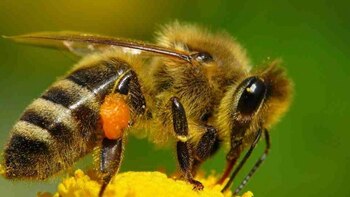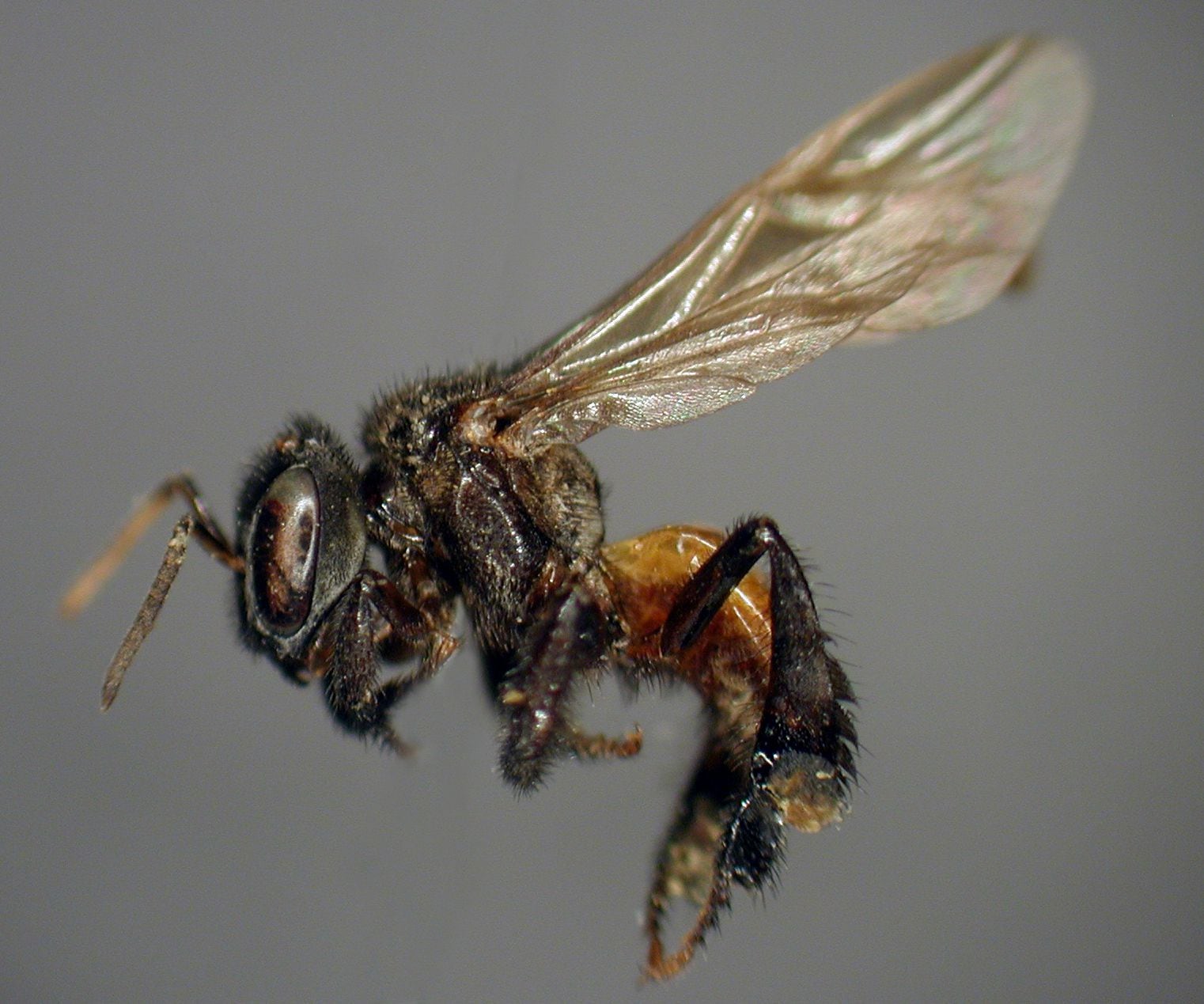
There are some bees, belonging to a little-known tropical species without a sting, commonly called “vulture bees”, which developed the ability to eat only meat. This rare behavior was motivated by a very intense competition for nectar.
In this way his gut has evolved, making it more like that of vultures than that of other bees. All these adaptations are complemented by changes in the microbiota, the intestinal flora, to allow the digestion of other compounds related to the new diet.
Intense competition for nectar led a species of stingless bee in the tropics to develop the ability to feed on meat. These are the only bees in the world that evolved to use non-plant food sources.

In this way, they established new symbiotic relationships with some microbes found in the intestines of vultures and other animals that feed on carrion. The baskets that stingless bees have on their hind legs to collect pollen, were used by these vulture bees to collect meat.
The intestinal flora of vulture bees is enriched with new bacteria that their relatives do not have, similar to those found in vultures, hyenas and other scavengers. These bacteria serve to protect them from the pathogens that appear in carrion. Any human being could become seriously ill because these microbes in the flesh release very potent and harmful toxins.
It is not yet known whether it was the carnivorous lifestyle of bees that influenced the growth of these microbes, or whether bacteria were the ones that allowed the carnivorous diet. A change in diet could have modified the flora, over time, but it is also possible that this change has allowed variation in diet, or that both may have interacted to generate that evolutionary adaptation.
These bees that feed on meat, rather than pollen, are able to store honey in separate chambers in their hives.

The bees made news two days ago when, in the village of La Esperanza in the municipality of Turbo, Antioquia, a swarm of Africanized bees attacked a 72-year-old blind man who later lost his life. Apparently, the honeycomb was located on one of the power poles near the victim's house.
Not only was this man affected, 10 other people were injured, one of them is a pregnant woman and a man recovering from surgery.
According to neighbors in the sector, these animals have built their diapers on several of the power poles and on several occasions have called on the corresponding authorities to solve this problem that puts their lives at risk.
*Prof. Dr. Juan Enrique Romero @drromerook is a veterinary physician. Specialist in University Education. Master's Degree in Psychoimmunoneuroendocrinology. Former Director of the Small Animal School Hospital (UNLPAM). University Professor at several Argentine universities. International lecturer.
KEEP READING:
Últimas Noticias
Debanhi Escobar: they secured the motel where she was found lifeless in a cistern
Members of the Specialized Prosecutor's Office in Nuevo León secured the Nueva Castilla Motel as part of the investigations into the case

The oldest person in the world died at the age of 119
Kane Tanaka lived in Japan. She was born six months earlier than George Orwell, the same year that the Wright brothers first flew, and Marie Curie became the first woman to win a Nobel Prize

Macabre find in CDMX: they left a body bagged and tied in a taxi
The body was left in the back seats of the car. It was covered with black bags and tied with industrial tape
The eagles of America will face Manchester City in a duel of legends. Here are the details
The top Mexican football champion will play a match with Pep Guardiola's squad in the Lone Star Cup

Why is it good to bring dogs out to know the world when they are puppies
A so-called protection against the spread of diseases threatens the integral development of dogs




